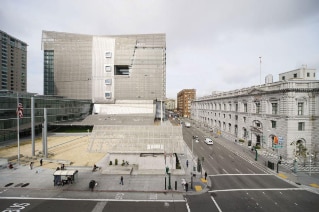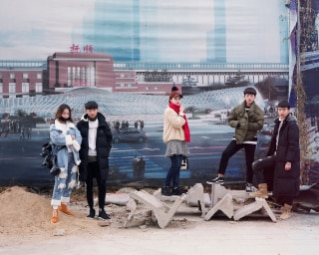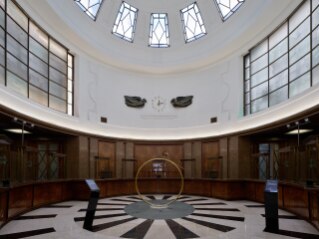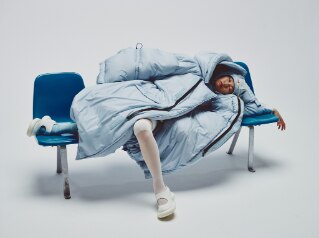Educational projects must respond to real needs. First and foremost, they have to identify a problem and then design an initiative to resolve it. A project that aims to teach the language of architecture as part of the timetable in a Spanish middle school is not the same as an extracurricular one in a Colombian museum or one in an art school for Finnish children. A project for children from conservative areas of European towns is not the same as one for children from down-to-earth neighbourhoods in Latin American cities. They are not the same thing.
Globally, there are dozens of projects that combine the words “childhood”, [1] “architecture” and “education” and resolve specific problems. These can be classified in different ways. Some teach architecture as a language – the children learn architecture in the same way that they learn dance, music, painting, and so on. Alternatively, the arts are seen as languages allowing us to investigate and construct the world we live in. Then there are participatory processes – social and political, or involving the design of spaces and objects – in which children and young adults are the decision-makers.
Video by architect Andrés Jaque from Jorge Raedó's What is Architecture? series
The infrastructure of education is important in children’s lives because they will spend many years within it. The educational space must be tailored to the teaching project bringing it to life. There are materials for teaching and play based on design and architecture going back to Froebel in the nineteenth century, and Lyonel Feininger, Ladislav Sutnar, Joaquín Torres-García, Bruno Munari and many others in the twentieth.
There are also continuing professional development schemes for pre-school, primary and secondary teachers to help their understanding of school buildings and architecture in general. This is supported by regeneration or appropriation of the public space – such as the streets children take to get to school, guided walks to introduce them to the surrounding heritage, playgrounds, improvements to the urban environment for children of pre-school age and for those who look after them, hospital education, and so on.
There is research on the childhood brain, the development of spatial perception, the relationship between the body and the world that surrounds it, the sense of direction and the construction of a mental map in which the child situates him or herself.
There are materials for teaching and play based on design and architecture going back to the nineteenth century
Osa Menor (Ursa Minor) is the name I have given to the research and practice of teaching art and architecture to children and adolescents. It is something I have been pursuing since 2008.
How do you teach a child architecture? The answer is through utopias, the capacity to imagine something good that does not exist and then create it (this requires the techniques of art); through poetry, the capacity to modify the order of the grammar handed down to you to develop a deeper form of communication (all the arts are forms of communication and have their own grammars); and through nature, the capacity to create a personal narrative within the collective narrative that brings it to life (the child grows like a tree in a welcoming thousand-year-old wood).
Video by architect Alberto Campo Baeza from Jorge Raedó's What is Architecture? series
Architecture, like the other arts, means concrete things: a building, a city, a painting, a sculpture, a novel, a performance. For example, when I look at a Neolithic sculpture, a form of communication comes into being between me and its creator, a form of communication that changes – and improves – me. For this reason, learning art means learning how to make concrete things. The teacher of architecture will teach children artistic techniques, methods and processes allowing them to create what they visualise in their minds, and encouraging them to improve on this. In other words, this involves constructing a world (a utopia) using the control of language (poetry) and starting from the personal story coupled to the collective story (nature). The process of artistic creation is a process of education.
From what I have seen when working with children in different countries, the genes we are born with have few implications for our present and future happiness, our success, satisfaction and peace of mind. It is the environment – social, cultural and economic – in which we grow up that forms us. Human constructs form children and guide them towards one destiny rather than another. Part of my work consists in creating a productive environment for the full development of childhood.
The videos aim to have an aesthetic impact on children, sparking curiosity about architecture
I have developed several projects to help attain these goals. One such is “Qué es Arquitectura?” (What is Architecture?), a series of short videos in which architects and professional theatre actors explain what architecture is to children aged between five and eight. The videos aim to have an aesthetic impact on children, sparking curiosity about architecture. We have also run workshops in different countries. “Amag! Architecure Magazine for Children” is an OER (open educational resource) site, with games that can be downloaded and printed in A4 format, allowing children to “play at architecture”.
In the games, a sheet of paper – a two-dimensional object – becomes three-dimensional. The content has been created by dozens of organisations around the world. Finally, there is Ludantia, the International Biennial of Education in Architecture for Children and Young People. Neurons cannot generate thought alone – they need synapses. Professionals focused on childhood, architecture and education need to share – like synapses – their experiences if they are to gain real knowledge. The Biennial is the overarching forum bringing them together.
We see a distant group of children moving. They are heading somewhere. Are they crying or laughing? Running away or playing? Behind them, the horizon whispers melodies of architecture, education and inclusion: hospital education requiring changes in medical spaces, alterations in school courtyards that promote gender equality, processes to improve public spaces in their neighbourhoods in which children participate, art education projects in “special” schools (is there anyone who is not special?), education infrastructure tailored to real-life childhoods – the list goes on.
Every childhood has specific needs requiring specific projects.
[1] The UN Convention on the Rights of the Child defines a “child” as person below the age of 18.















